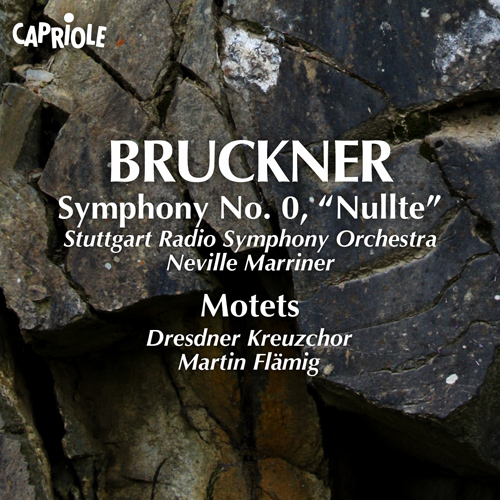Exclusively available for streaming and download.
BRUCKNER, A.: Symphony No. 0 (Stuttgart Radio Symphony, Marriner) / Motets (Dresdner Kreuzchor, Flamig)
Tracklist
Marriner, Neville (Conductor)
Marriner, Neville (Conductor)
Marriner, Neville (Conductor)
Marriner, Neville (Conductor)
Marriner, Neville (Conductor)
Flämig, Martin (Conductor)
Flämig, Martin (Conductor)
Bible - Old Testament - Lyricist
Flämig, Martin (Conductor)
Flämig, Martin (Conductor)
Aquinas, Thomas - Lyricist
Flämig, Martin (Conductor)
Flämig, Martin (Conductor)
Bible - New Testament - Lyricist
Flämig, Martin (Conductor)
Flämig, Martin (Conductor)
Sir Neville Marriner was born in Lincoln in 1924 and studied the violin first in London at the Royal College of Music and then at the Paris Conservatoire with René Benedetti. After teaching for a year at Eton College, in 1949 he joined the Martin String Quartet, and with musicologist Thurston Dart formed the Jaco bean Ensemble, which specialized in 17th- and 18th-century music. From 1952 to 1968 he was a violinist with the London Philharmonia and with the London Symphony Orchestra, of which he was principal second violin for twelve years beginning in 1956. During this period he also formed the Virtuoso String Trio, and then, in 1959, the Academy of St Martin-in-the-Fields. Sir Neville gravitated increasingly toward conducting and took lessons from Pierre Monteux. His first appointment was in 1969 with the Los Angeles Chamber Orchestra. In 1979 he became music director of the Minnesota Orchestra, holding that post until 1986, when he returned to Europe as music director of the Stuttgart Radio Symphony Orchestra (until 1989). Throughout the whole period he continued to work with the Academy. As his conducting career progressed, the orchestra’s original basis in music of the Baroque expanded to include Viennese classics, Romantic, and 20th-century works, as well as opera, notably Mozart and Rossini. His interpretations of Corelli, Vivaldi, Bach, Haydn, Rossini, Dvorak, Bartok, Stravinsky, Britten, and Tippett are highly esteemed, but there is hardly a corner of the repertoire in which the vitality and elegance of Sir Neville’s leadership have not brought him—and the Academy—great distinction. He was made a Commander of the Order of the British Empire in 1979 and was knighted in 1985.

Anton Bruckner, born near Linz in 1824, is known chiefly as a symphonist. He trained as a schoolteacher and organist, serving in the second capacity in Linz until moving in 1868 to Vienna to teach harmony, counterpoint and organ at the Vienna Conservatory. His success as a composer was varied in his lifetime, his acceptance hampered by his own diffidence and his scores posing editorial problems because of his readiness to revise what he had written. He was nine years the senior of Brahms, who outlived him by six months. Bruckner continued Austro-German symphonic traditions on a massive scale, his techniques of composition influenced to some extent by his skill as an organist and consequently in formal improvisation.
Orchestral Music
Bruckner completed nine numbered symphonies (10 if the so-called Symphony No 0, ‘Die Nullte’, is included). The best known is probably Symphony No 7, first performed in Leipzig in 1884; the work includes in its scoring four Wagner tubas, instruments that were a newly developed cross between the French horn and tuba. Symphony No 4, ‘Romantic’, has an added programme—a diffident afterthought. All the symphonies, however, form an important element in late-19th-century symphonic repertoire.
Choral Music
Bruckner wrote a number of works for church use, both large and small scale. Among the former are Te Deum, completed in 1884, and various settings of the Mass, including the well-known Mass No 2 in E minor.































